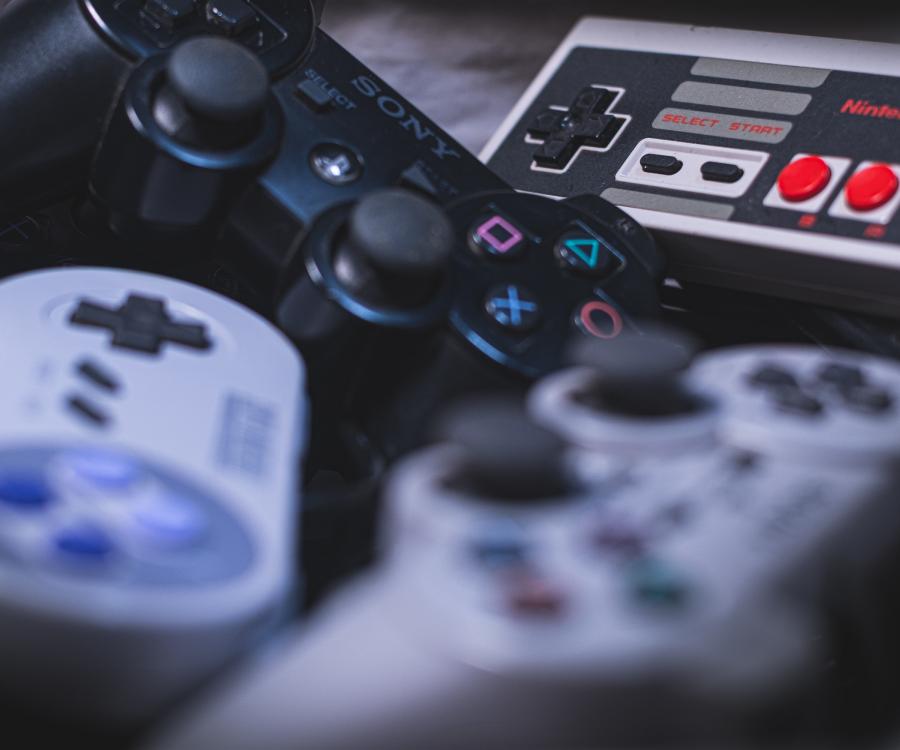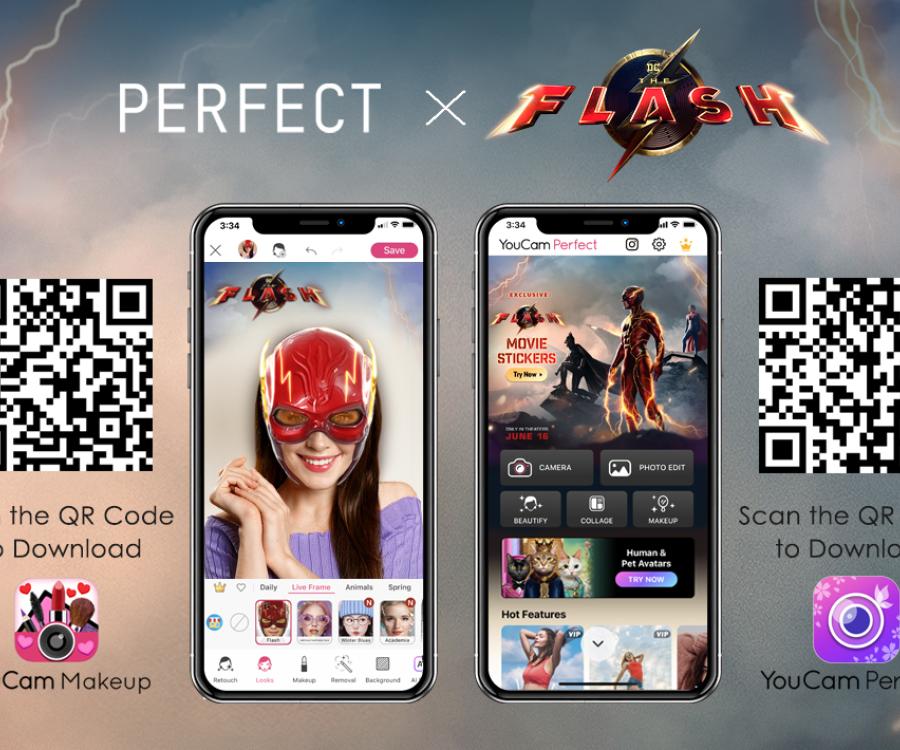With the retention and engagement crises arise, the retail industry is looking for a remedy. Customer experience has become an important factor for success in retailing. Gamification appears to be a go-to tactic to enhance sales, brand awareness, and customer loyalty.
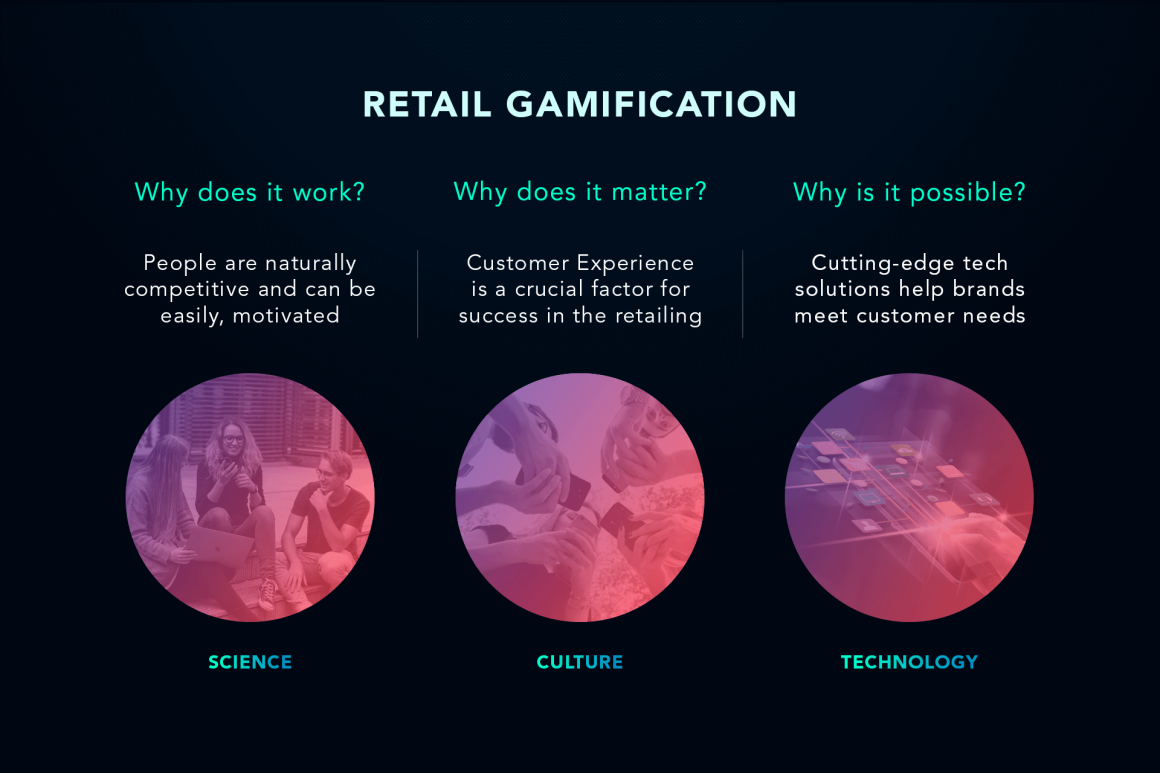
According to Boston Retail Partners, within next five years, nine of ten retailers, which equals to 87 percent, are going to apply gamification to engage their customers. Moreover, half of them, namely 46 percent, believe that structured loyalty programs are a top CRM priority.
As the gamification concept emerged, various major companies started to implement gamification techniques into their businesses. Among them are Adobe, NBC, eBay, Walgreens Oracle, Cisco, etc. Gamification has become a key element in the consumerization strategies of these companies.
Motivation through progress bars
Gamification, which implies the process of incorporating gaming mechanics into non-gaming contexts in order to affect customer behavior, has been here for many years, e.g. loyalty programs, flash sales, progression bars.
“Gamification is all around us,” Danny Maco, former general manager of University Games, said to MobileCast Media. “Loyalty programs are a great example, which you can see everywhere, whether it’s at Safeway or flying on an airline; they all have game mechanics [such as] the progression bar – a mechanic associated with achievement.”
But why it is so powerful? People are naturally competitive, we can be easily motivated by different rewards, whether they are physical or monetary, or bragging rights. Therefore gamification, playing on humans’ competitive streaks, is able to empower businesses to motivate both customers and employees.
Regarding customers, gamification-powered technologies can form a smiling community, which will bolster engagement and communication, thereby providing retailers with insights about customer sentiment and perspectives. Contributing to cooperation between staff members, gamification can also enhance overall productivity, and hence improve in-strore experience.
AR + Gamification = better results
Augmented reality (AR) has become an ultimate tool for retail as well.
AR with its ability to overlay the real world with digital objects allows retailers to engage customers even more with their brands.
For instance, Macy’s magic fitting room, an AR mirror, allows buyers try as many outfit combinations as they want, testing the same product in various colors. Moreover, Macy’s AR mirror, is able to asses sizes and recommend customers items in stock in the right size.
UI and UX for gamified apps
The most crucial elements of any gamified application are User Experience (UX) and User Interface (UI). UX design is the designing process of software product interfaces focused on the end user’s perception of the product. According to Forbes, high-quality UX is a key factor showing how companies run a business.
UI is the designing process of software product interfaces aimed at efficient interaction between the user and the machine. Essentially, it encompasses all the controls, buttons and elements of the application creating a visual appearance of the product.
A great UI/UX design makes a gamification app more appealing for users, thereby encouraging more customers to use it, and, as a result, enhancing brand loyalty and recognition. For instance, when a gamification application is designed with brand colors, logos, and other characteristic features, users start to associate it with the brand products.
Gamification techniques
Desire for competition, status, and achievement are the main drivers in gamification. Relying on them, gamification actively uses various stimuli, including the following:
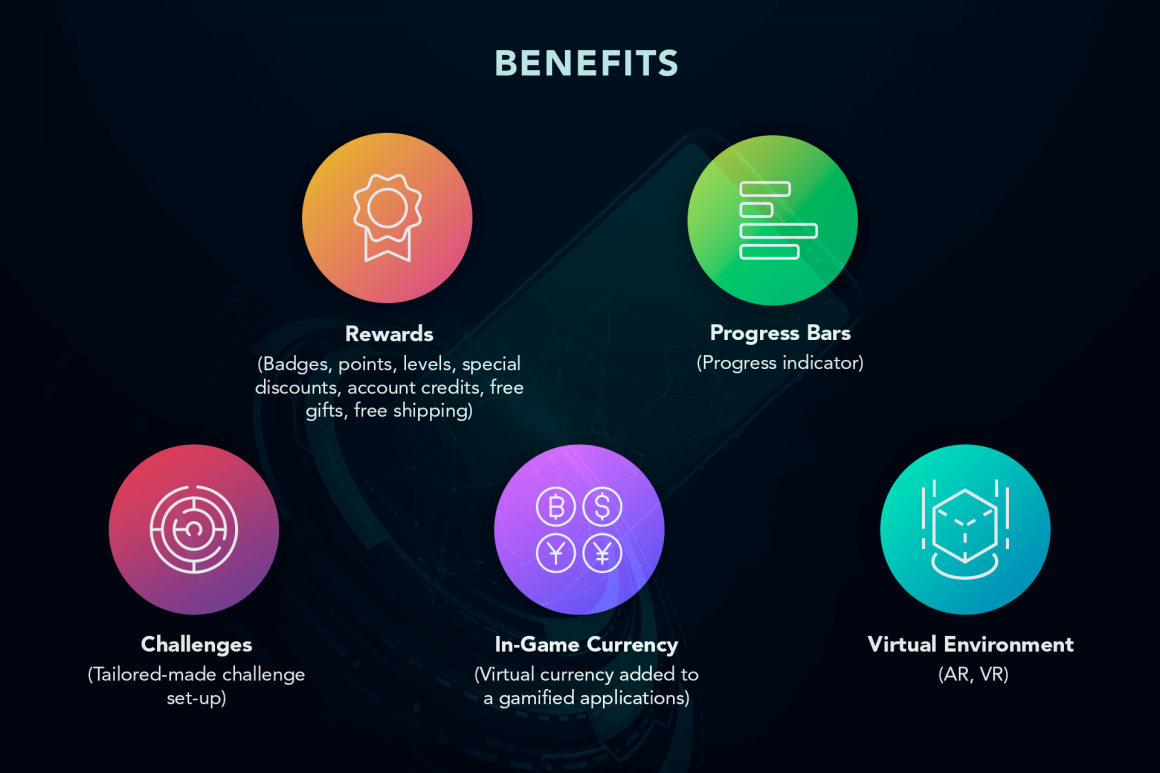
- Rewards
One of the efficient techniques solutions in retail gamification programs is rewards. With prizes provided for accomplished tasks, customers get a dopamine hit when receiving a reward. Such rewards can include badges, points, levels, special discounts, account credits, free gifts or free shipping.
- Progress bars
Introducing a progress bar into a business gives another opportunity to generate customers’ engagement, and as a result gain their loyalty to the brand. As human’s brain can not outstand incomplete things, especially that dangling in front of a progress bar serving as progress indicator,which stimulates people to keep working toward completing tasks.
- Challenges
Challenges is also an important tool in gamified applications. Being a powerful motive, it allows retailers to encourage their customers to take the expected action. The challenge setup is usually tailored-made and directs the customers depending on the context, which helps you to refine where you want your customer to go and how you want them to get there.
- In-game currency
The desire of material benefits is a major factor, influencing our behavior. In-game or virtual currency added to a gamification applications can shape users behavior as well as increase their retention and engagement. In addition, a virtual world, where in-game currency has a significant role, encourages its users to cash out in the real one.
- Virtual environment
Creating a virtual environment or adding virtual elements to a gamified application can highly benefit retailers in capitalizing on users’ engagement. Applying virtual environment, retailers can drive purchase, providing an online experience that will return customers to time after time.
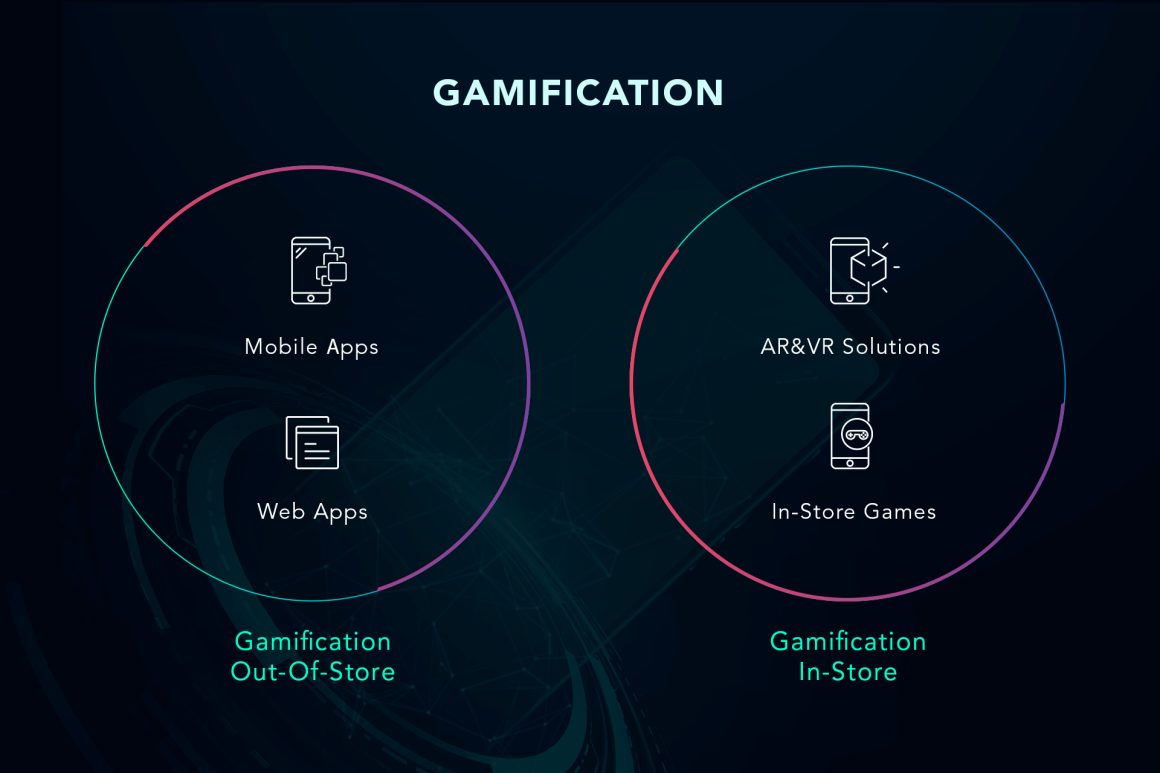
In-store games & gamification
The concept of gamification has proved to be extremely effective in mobile apps context. Gamification enables a mobile app to be «sticky», for users, encouraging users to spend more time with a gamified app thus generating returns. Such applications also offers retailers valuable data about customers preferences and behavior in real time, helping therefore retail companies to better target the needed audience.
Today, the tech industry advances at a rapid pace, revolutionizing many industries. VR and AR are now one of the most promising in the of the retail segments with such giants such as IKEA and Lowe’s starting to play in this field.
VR is artificially created environment that is designed to simulate a user’s physical presence in a virtual environment. Alternatively, AR, with its use of visual elements, sounds or other sensory stimuli represents and enhances version of the real world.
AR and VR-powered technologies can enhance retail shopping by making customer experience more engaging and customized. For instance, in shopping surrounding AR can improve the changing room experience, offering customers an opportunity to view an outfit from different angles.
Another powerful application of the gamification is introduction of games into at shopping venues. Implementation of in-store games can increase the time spent in a store, generate more new and returning customers, promote brand awareness, as well as accelerate customer acquisition.
The full report can be found here.

